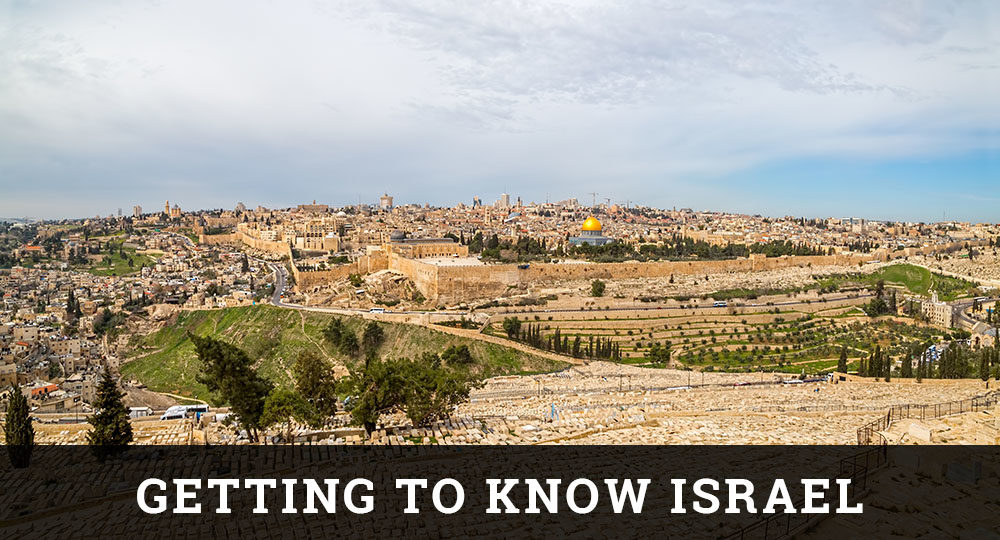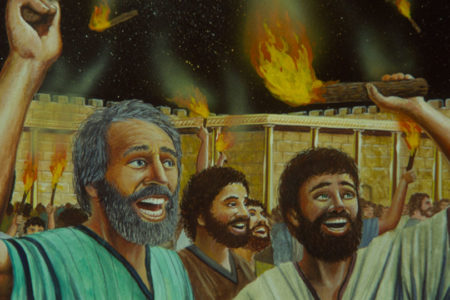Hazor
One of my favorite expressions to describe Israel is Land of Contrasts. Just below the region of Dan, which was covered in the previous issue, is a valley that typifies this expression very well. The Huleh Valley is the northernmost extension of the Jordan Valley. It begins just north of the Sea of Galilee and continues to the base of Mount Hermon. For much of its ancient history, it was flooded with small lakes and swamps. In more recent years, however, modern Israeli technology and determination have resulted in the irrigation of the valley, which has transposed a wasteland into a highly productive agricultural basin.
Running along the western edge of this valley is the northern extension of the Via Maris, the ancient highway system running through Israel and connecting Egypt with Damascus, Syria. In Bible times, this highway was the entrance to and exit from the region of Galilee. The major nations of the world traveled this route, conquering and exploiting Israel each time they passed through.
At either end of the Huleh Valley and along the Via Maris rest two major settlements. At the southern end is the ancient (and now uninhabited) tel of Hazor. At the northern end is the modern and vibrant community of Qiryat Shemona. In their respective time periods, they have stood as sentinels guarding the valley.
In Old Testament times, Hazor stood as an impressive obstacle to those who would pass through northern Israel/Canaan. The height from the valley floor to the apex of the tel approaches 75 feet. The tel itself covers nearly 200 acres, only a fraction of which has been excavated. Twenty-one layers of occupation have been uncovered by archaeologists, along with a large and abundant water source. Its rich biblical history indicates that it was a significant and important city for Joshua to conquer (Josh. 11); it was later reoccupied and ruled by an oppressor of Israel (Jud. 4), recaptured and fortified by Israel’s later kings (1 Ki. 9:15; 2 Ki. 15:29), and defeated by Nebuchadnezzar (Jer. 49:28–33).
During the 1950s, the city of Qiryat Shemona was established. Its name is derived from an interesting incident that occurred earlier in Israel’s modern history. In 1919, a Jewish-Russian army officer, Joseph Trumpeldor, immigrated to Israel and pioneered (with others) a little community called Tel Hai (Hill of Life), located north of the present site of Qiryat Shemona. He and seven others were killed in an Arab ambush attack upon their settlement. In honor of their supreme sacrifice to help establish the modern state of Israel, this town was created and named in their honor—Qiryat Shemona, Village of Eight. This village continued to pay a price for its existence by absorbing, in recent years, the attacks of Ketusha rockets from Syria. However, since Israel gained control of the Golan Heights, this threat has been virtually eliminated.
The strategic location of the Huleh Valley and these two cities continues to highlight one of the interesting dilemmas of Israel’s existence. If she is to survive, she needs both agriculture and security. And so, whether it was controlling Hazor during Old Testament times or protecting Qiryat Shemona today, Israel continues to demonstrate its priority concern for the Huleh Valley. Whether you enter or exit the Land, you must go through it, absorbing its beauty and protecting its interests.







